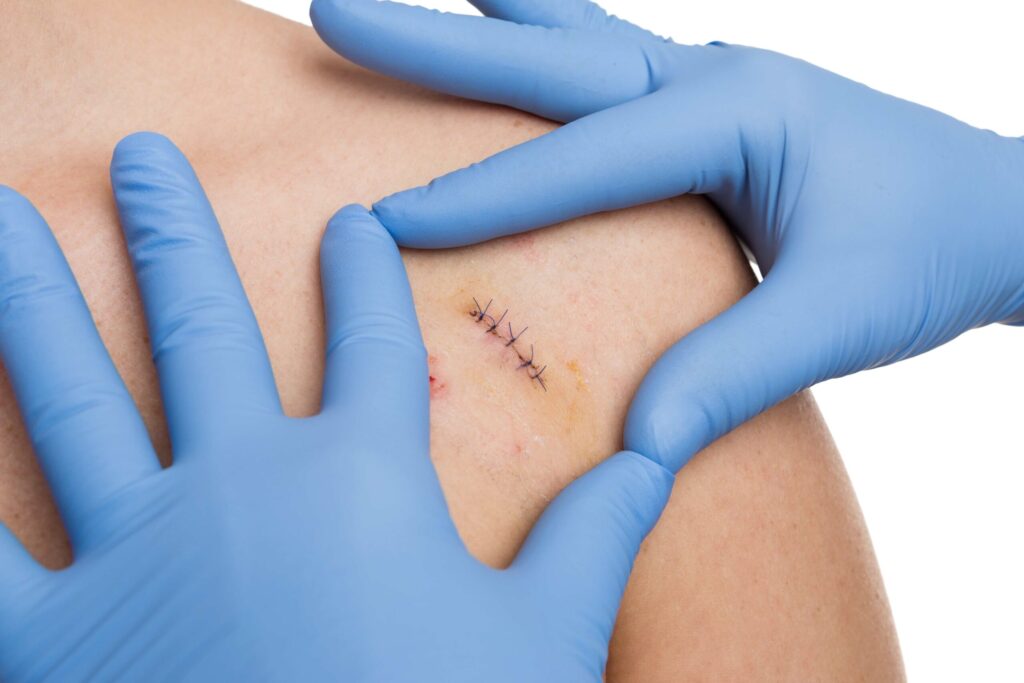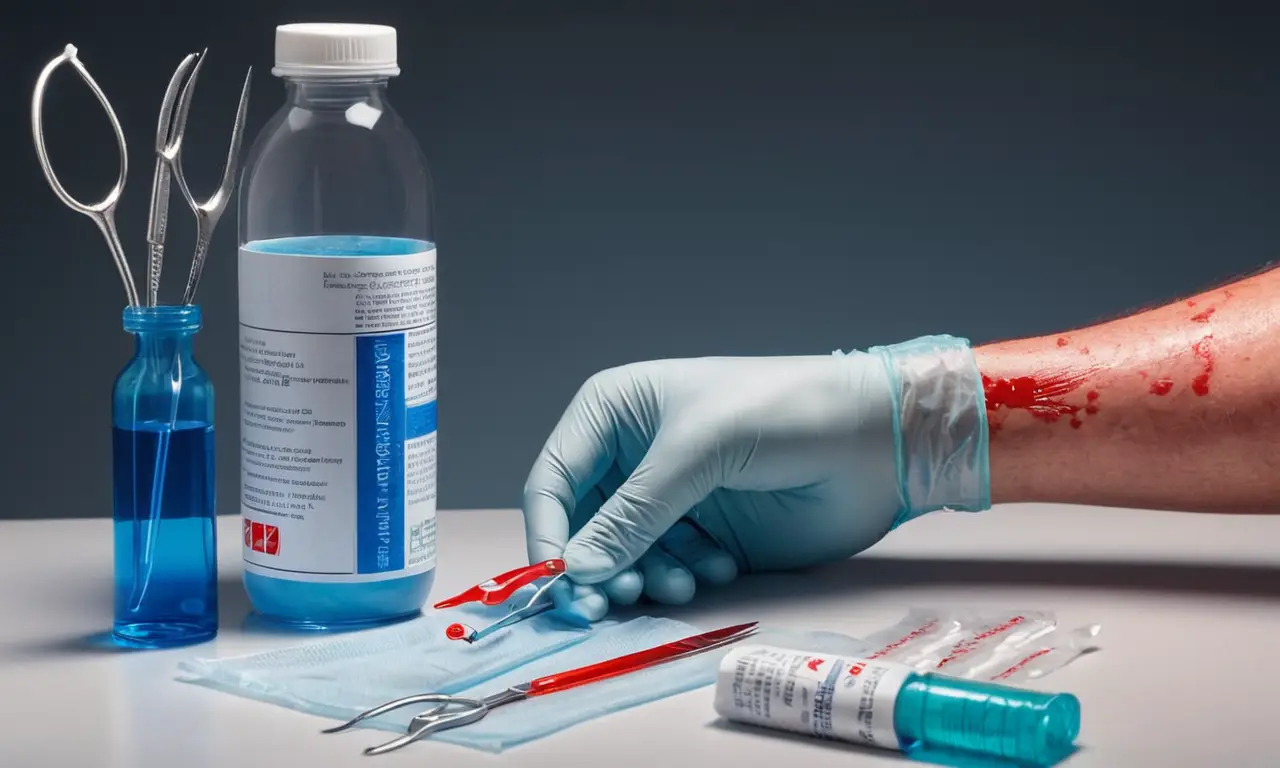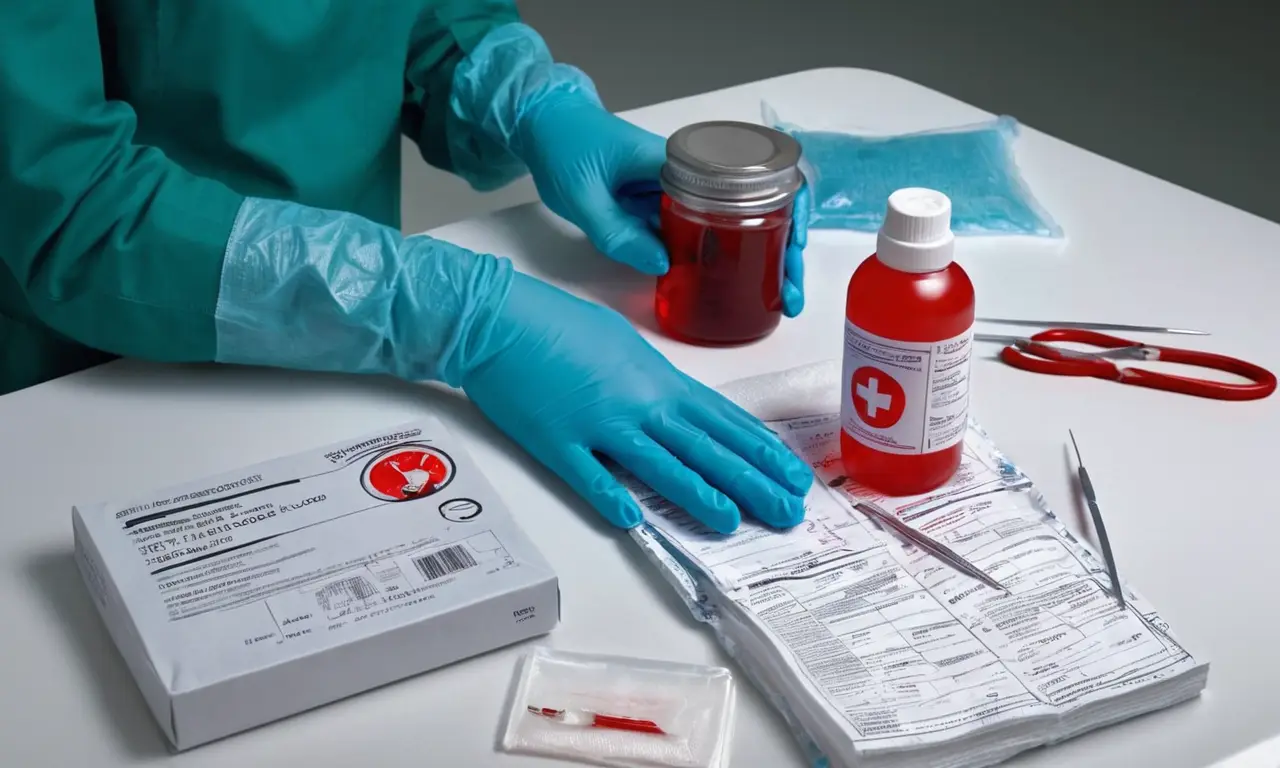
Wound care is a crucial aspect of healthcare, encompassing the assessment, cleaning, and treatment of injuries. Nurses play a vital role in this process, providing essential care to patients with various types of wounds. One specific skill nurses often utilize is suturing minor lacerations and incisions under the guidance of a physician. This article will delve into the nurse’s role in wound care, focusing on their ability to perform basic sutures for superficial wounds. We’ll explore the types of wounds suitable for suture closure, the importance of proper wound healing, and the crucial supervision provided by physicians throughout this process.
Nurse’s Role in Wound Care
Nurses are integral members of the healthcare team, providing comprehensive care to patients with a wide range of conditions. Their role in wound care extends beyond simply cleaning and dressing wounds; they actively participate in assessing the severity of injuries, identifying potential complications, and implementing appropriate treatment plans. Nurses possess extensive knowledge about different types of wounds, infection control protocols, and wound healing stages. They educate patients on proper wound care practices at home, ensuring optimal recovery and minimizing the risk of infection.
Nurses often work closely with physicians to manage complex wound cases, providing valuable insights into the patient’s condition and progress. Their ability to monitor wounds regularly, identify changes, and promptly communicate concerns to physicians is crucial for effective wound management. Furthermore, nurses play a vital role in promoting patient comfort and well-being throughout the healing process, offering emotional support and addressing any anxieties or questions patients may have.
Suturing Minor Injuries

While physicians typically perform complex surgical stitching, registered nurses (RNs) are trained to administer basic sutures for superficial wounds under physician supervision. This skill allows nurses to effectively close minor lacerations and incisions, promoting faster healing and minimizing scarring. Nurses utilize sterile techniques and specialized instruments to ensure a safe and effective suturing procedure. They carefully assess the wound’s edges, select appropriate suture materials, and meticulously place sutures to bring the wound edges together.
The process of suturing involves several steps, including cleaning the wound thoroughly, removing any foreign debris, and applying local anesthesia to minimize discomfort. Nurses then use a needle and thread to stitch the wound edges together, ensuring proper alignment and tension. Once the sutures are in place, nurses apply sterile dressings to protect the wound and promote healing.
Types of Sutures
Nurses utilize various types of sutures depending on the wound’s location, size, and depth. Common suture materials include absorbable sutures, which dissolve naturally over time, and non-absorbable sutures, which require removal by a healthcare professional after several days or weeks. The choice of suture material depends on factors such as the wound’s healing capacity and the patient’s individual needs.
Types of Wounds Suitable for Suture Closure
Not all wounds are suitable for suture closure. Nurses carefully assess each wound to determine its appropriateness for suturing. Generally, minor lacerations and incisions with clean edges and minimal tissue damage are ideal candidates for suture closure. These wounds typically involve superficial layers of skin and underlying tissues.
Wounds that are heavily contaminated, deep, or exhibit signs of infection are not suitable for suture closure. In such cases, other wound management techniques, such as debridement and antibiotic therapy, may be necessary. Nurses collaborate with physicians to determine the most appropriate treatment plan based on the specific characteristics of each wound.
Importance of Proper Wound Closure

Proper wound closure is essential for optimal healing and minimizing complications. When wounds are closed effectively, it promotes tissue approximation, reduces the risk of infection, and minimizes scarring.
By bringing the wound edges together, sutures create a secure environment that allows for proper cell migration and collagen formation, leading to faster and more efficient wound healing. Proper closure also helps prevent the entry of bacteria and other foreign substances into the wound, reducing the likelihood of infection.
Supervision by Physicians
While nurses are trained to perform basic suturing procedures, they always work under the supervision of a physician. Physicians provide guidance on wound assessment, suture selection, and overall treatment plan. They review the nurse’s work, ensure proper technique, and address any concerns or complications that may arise.
This collaborative approach ensures that patients receive safe and effective wound care, adhering to best practices and medical guidelines. Physicians also play a crucial role in monitoring patient progress, adjusting treatment plans as needed, and providing ongoing support throughout the healing process.
Conclusion
Nurses play a vital role in wound care, including suturing minor injuries under physician supervision. Their expertise in wound assessment, cleaning, and closure techniques contributes significantly to patient recovery and well-being. Proper wound closure promotes faster healing, minimizes scarring, and reduces the risk of infection. The collaborative relationship between nurses and physicians ensures that patients receive comprehensive and effective wound care, leading to optimal outcomes.
